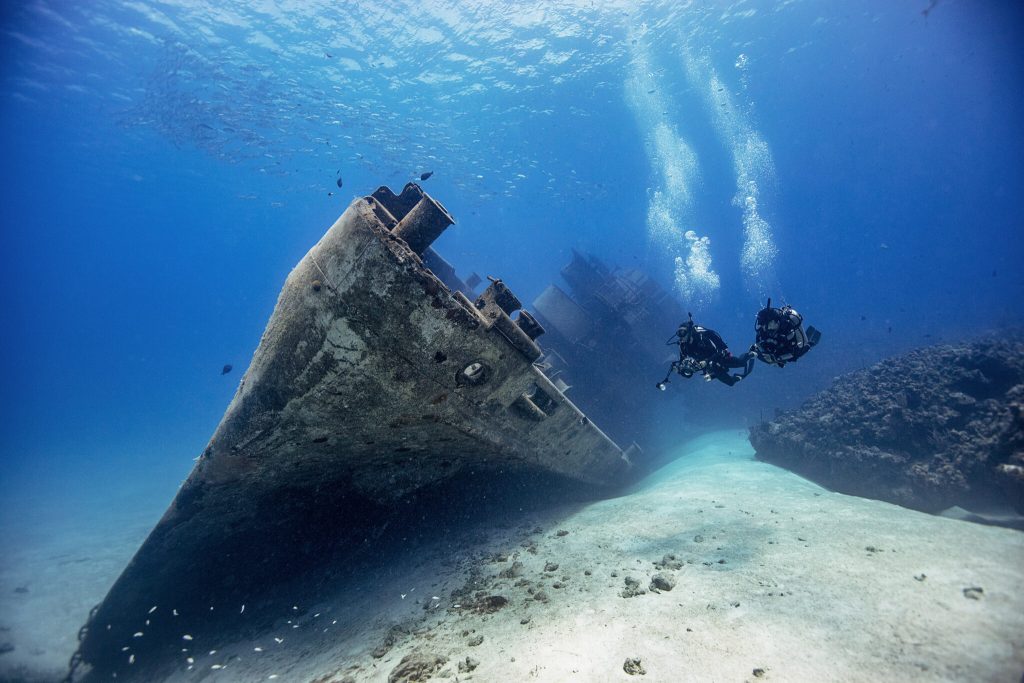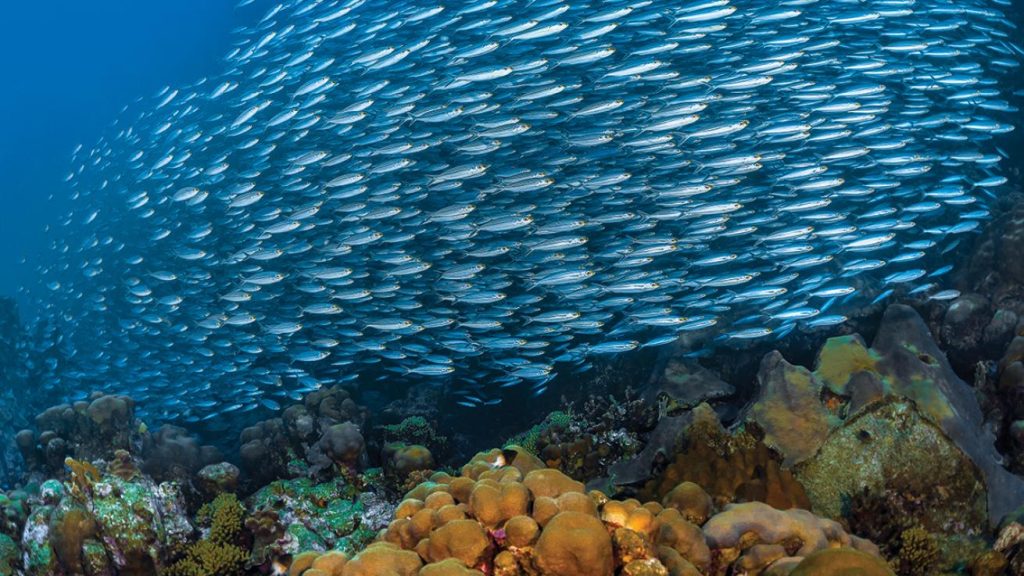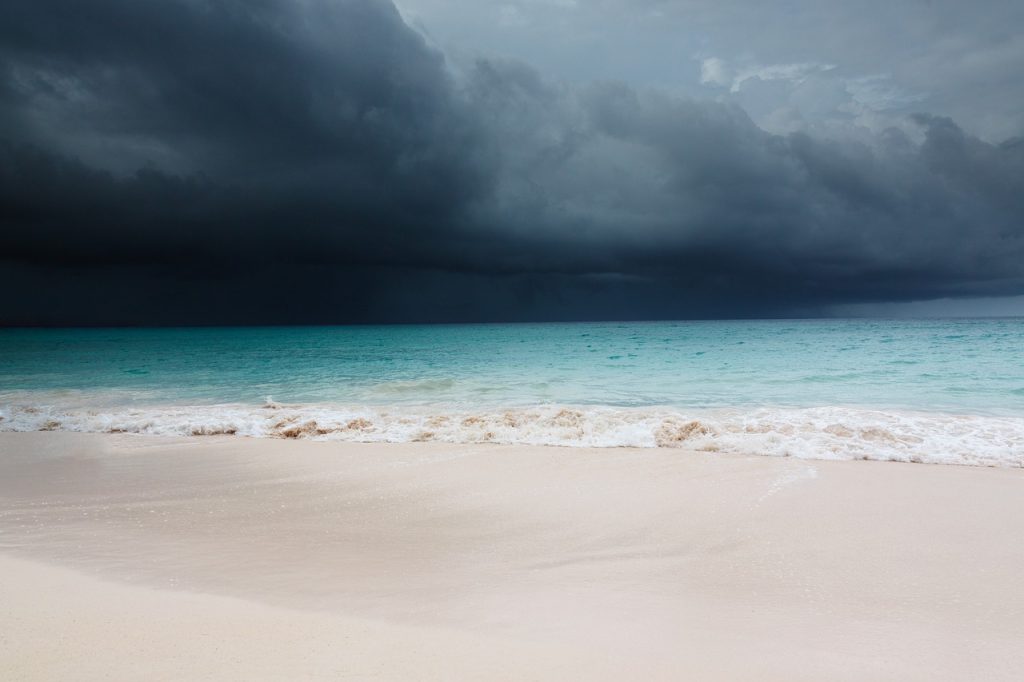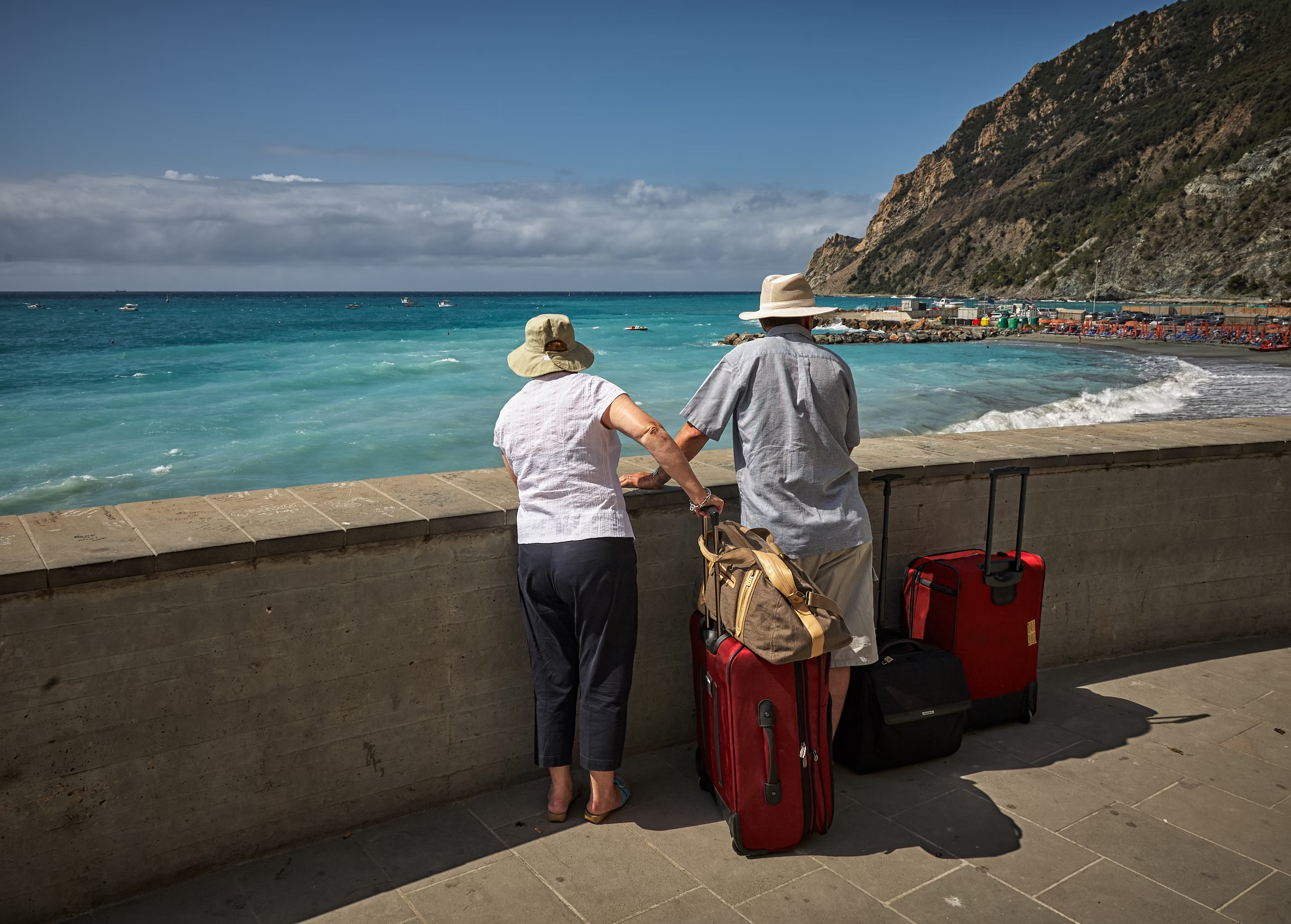Scuba diving is not just a sport; it’s an exploration of a world many people don’t get to explore. The allure of discovering the mysteries of the ocean has captivated enthusiasts around the globe.
Scuba diving is an enthralling activity that combines the excitement of exploration with the serenity of being submerged in the underwater world. It’s a sport that appeals to adventure seekers, nature enthusiasts, and those curious about the marine ecosystem.
Diving allows us to explore hidden underwater landscapes, encounter exotic marine species, and experience the tranquility of being part of the aquatic environment.
However, as with any adventure sport, safety is a crucial aspect of scuba diving. This is especially true when diving into unfamiliar territories abroad.
This comprehensive guide aims to introduce you to the safest scuba diving destinations around the world, ensuring that your underwater adventures are not only exhilarating but also secure.
We’ll explore a brief history of scuba diving, highlight top safe diving spots, and provide essential tips for planning international scuba vacations.
Let’s dive in!
A Brief History of Scuba Diving
Scuba diving, as we know it today, has evolved significantly from its early days. Initially, diving was restricted by the diver’s ability to hold their breath. The invention of the Aqua-Lung by Jacques-Yves Cousteau and Émile Gagnan in 1943 revolutionized this, allowing divers to explore deeper and for longer periods.
Over the years, advancements in technology and understanding of diving physiology have made it a safer and more accessible activity for enthusiasts worldwide.
Today, scuba diving is not just a pursuit for scientific and military purposes but a popular recreational activity that unites people with the wonders of the aquatic world. In fact, around 6 million people scuba dive around the world each year.
The World’s 10 Safest Scuba Diving Destinations
Before we dive into each of the world’s 10 safest scuba diving destinations, here’s our list so you can check them out for yourself:
- Great Barrier Reef, Australia
- Cayman Islands
- Bonaire, Caribbean Netherlands
- Maldives
- Hawaii, USA
- Cozumel, Mexico
- Bali, Indonesia
- Red Sea, Egypt
- Fiji
- Azores, Portugal
1. Great Barrier Reef

The Great Barrier Reef, a majestic natural wonder located off the coast of Queensland, Australia, is one of the best diving destinations in the world.
Spanning over 2,300 kilometers and comprising more than 2,900 individual reefs and 900 islands, it is the largest coral reef system in the world and can even be seen from space.
This UNESCO World Heritage Site attracts divers from across the globe, offering an unparalleled diving experience.
Diving in the Great Barrier Reef is like stepping into an entirely different world. The warm, clear waters provide excellent visibility, often extending up to 30 meters, allowing divers to fully immerse themselves in the stunning beauty of the reef.
The marine biodiversity here is unmatched, with over 1,500 species of fish, 400 types of coral, and a myriad of other marine creatures like sea turtles, sharks, and dolphins. Each dive site along the reef offers its unique charm, from the coral gardens at Heron Island to the dramatic underwater cliffs of the Ribbon Reefs.
Beginner divers can enjoy shallow, calm waters with gentle currents, making it a safe and encouraging environment to learn and gain confidence.
More experienced divers can venture into deeper waters to explore shipwrecks, swim with minke whales, or navigate through the more challenging sites that the vast reef system offers.
How Is it Safe?
Safety is a top priority in the Great Barrier Reef. The region is home to numerous professional diving operators who adhere to strict safety standards.
These operators provide thorough briefings, and high-quality equipment, and ensure that dive groups are led by experienced and certified dive masters or instructors.
They are well-versed in the local conditions and can guide divers to the sites best suited to their experience levels.
Additionally, the Great Barrier Reef Marine Park Authority works tirelessly to protect and preserve this natural wonder. They regulate activities on the reef to ensure both diver safety and the conservation of the reef’s delicate ecosystem.
Emergency services and medical facilities are readily accessible, with staff trained to handle diving-related emergencies.
What Makes it Unique?
What sets the Great Barrier Reef apart is not just its size but its diversity. From the shallow, colorful coral gardens that are perfect for snorkeling and beginner divers, to the outer reef’s more challenging dive sites for the seasoned diver, it caters to every level of experience.
Iconic sites like Cod Hole, where divers can encounter the friendly and enormous potato cod, and the SS Yongala wreck, one of the best wreck dives in the world, offer unforgettable experiences.
Seasonal events also add to the reef’s allure, such as the annual coral spawning, a spectacular natural event where corals release millions of eggs and sperm into the water, creating a unique underwater snowstorm of sorts.
2. Cayman Islands

The Cayman Islands, a British Overseas Territory nestled in the western Caribbean Sea, is a scuba diving paradise known for its crystal-clear waters, diverse marine life, and well-established safety standards.
Comprising 3 islands – Grand Cayman, Cayman Brac, and Little Cayman – each offers unique diving experiences that cater to divers of all levels.
The Cayman Islands boast exceptional diving conditions year-round, making it a perfect destination for both beginners and experienced divers. The water temperature ranges from 78°F in the winter to around 86°F in the summer, providing comfortable diving conditions.
Visibility is outstanding, often exceeding 100 feet, allowing divers to fully appreciate the stunning coral formations and the vivid marine life.
One of the most distinctive features of diving in the Cayman Islands is the variety of dive sites. From serene coral gardens and shallow reefs perfect for novices to dramatic wall dives and intriguing shipwrecks for the more adventurous, there’s something for every diver.
The North Wall in Grand Cayman, famous for its sheer drop-offs, and Bloody Bay Wall in Little Cayman, renowned for being one of the Caribbean’s most spectacular wall dives, are just a few examples of the extraordinary dive experiences available.
How Is it Safe?
Safety is paramount in the Cayman Islands. The dive industry here is highly regulated with strict adherence to international safety standards. Dive operators are required to be certified and equipped with essential safety equipment, including oxygen kits and communication devices.
Many dive shops also offer courses in dive safety and first aid, emphasizing the importance of being prepared for any situation.
Furthermore, the Cayman Islands’ hyperbaric chamber, staffed with trained medical professionals, provides an additional layer of safety for divers. Regular inspections and maintenance of diving equipment are standard practices among dive operators, ensuring that all gear is in top-notch condition.
What Makes it Unique?
The marine life in the Cayman Islands is as diverse as it is abundant. Divers can expect to encounter a wide range of aquatic creatures, from colorful tropical fish and graceful stingrays to sea turtles and rare eagle rays.
The famous Stingray City, a shallow sandbar in Grand Cayman, offers a unique opportunity to interact with friendly Southern stingrays.
In addition to these, the islands’ reefs are home to an array of exotic marine species, including moray eels, nurse sharks, and a variety of coral species.
The commitment to marine conservation in the Cayman Islands has resulted in flourishing aquatic ecosystems, providing divers with the chance to explore some of the most pristine underwater environments in the world.
3. Bonaire

Bonaire, part of the Dutch Caribbean’s ABC islands, stands out as a beacon of marine conservation and responsible diving practices. Its dedication to preserving the natural beauty and health of its underwater ecosystems makes it a premier destination for eco-conscious divers.
Bonaire’s commitment to marine conservation is exemplified by the Bonaire National Marine Park, which encompasses the island’s entire coastline. Established in 1979, this marine park is one of the oldest in the world and is home to an astonishing variety of coral reefs, seagrass beds, and mangroves.
The park operates under strict guidelines to protect and preserve its fragile ecosystems. Activities such as anchoring on coral, spearfishing, and the collection of marine life are strictly prohibited.
These regulations, along with ongoing research and conservation projects, have helped maintain the health and vibrancy of Bonaire’s marine habitats.
How Is it Safe?
Safety in diving is a top priority in Bonaire. The island is known for its “Diver’s Paradise” ethos, partly because of the easy access to numerous shore diving sites, which allows divers to explore at their own pace while maintaining safety.
The dive operators on the island adhere to international safety standards, providing well-maintained equipment, comprehensive dive briefings, and ensuring that dive groups are accompanied by experienced professionals.
Additionally, Bonaire’s clear, calm waters and manageable currents make it an ideal location for divers of all skill levels, including beginners.
What Makes it Unique?
The underwater world of Bonaire is a treasure trove of marine biodiversity. The island’s coral reefs are in exceptional condition, hosting a multitude of fish species, vibrant corals, and other marine life.
Iconic dive sites like Klein Bonaire, a small uninhabited islet, offer pristine diving conditions. Divers can expect to see a variety of sea creatures, including parrotfish, angelfish, barracudas, and sea turtles.
For those interested in macro photography, Bonaire’s reefs are also home to smaller critters like seahorses and nudibranchs.
The island’s commitment to conservation ensures that these underwater wonders continue to thrive, offering an unparalleled diving experience that is both safe and environmentally responsible.
- Maldives
Right in the heart of the Indian Ocean, the Maldives is a tropical paradise renowned for its stunning atolls, crystal-clear waters, and some of the most spectacular diving experiences in the world.
The archipelago’s commitment to providing safe and guided diving excursions makes it a preferred choice for divers seeking both adventure and security.
How Is it Safe?
Safety in diving is paramount in the Maldives. The islands are dotted with numerous dive centers and resorts that provide professional, guided diving services.
These centers are staffed with experienced dive instructors and guides who are well-versed in the local marine conditions and dedicated to ensuring the safety of every diver.
Divers of all levels, from beginners to advanced, can find tailored diving experiences that suit their skill level.
The dive operators in the Maldives adhere to strict safety protocols. They conduct detailed briefings before each dive, highlighting the specific characteristics of the dive sites, current conditions, and safety procedures.
Diving groups are kept small to ensure personalized attention and safety. The equipment provided is regularly inspected and maintained to high standards, and many dive centers offer comprehensive diving courses, including those focused on safety and emergency procedures.
What Makes it Unique?
The underwater scenery in the Maldives is nothing short of breathtaking. The islands are surrounded by rich and diverse coral reefs that teem with vibrant marine life.
Divers can explore a variety of underwater landscapes, including deep channels, colorful coral walls, and underwater pinnacles known as thilas.
The Maldives is famous for its large pelagic life; it’s not uncommon to encounter manta rays, whale sharks, and schools of hammerhead sharks.
The reefs are inhabited by a multitude of fish species, from tiny, vividly colored reef fish to large Napoleon wrasses. The clarity of the water enhances the diving experience, offering excellent visibility to witness the spectacular marine life in its full glory.
- Hawaii
Hawaii, the Aloha State, is not only a paradise for beach-goers and surfers but also a world-class destination for scuba divers. The islands’ unique geographical location in the middle of the Pacific Ocean, coupled with their volcanic origins, creates an extraordinary environment for diving.
How Is it Safe?
Hawaii takes the safety of its divers seriously. Dive operators across the islands adhere to stringent safety standards. They ensure that all equipment is regularly serviced and maintained, and dive guides and instructors are well-trained and certified.
Pre-dive safety briefings are standard practice, where divers are informed about the specifics of the dive site, including depth, currents, and what marine life they might encounter.
The state’s remote location has made it necessary for local dive operators to be self-reliant in terms of safety and emergency procedures. Many boats are equipped with oxygen and first aid kits, and the crews are trained in emergency response.
The dive community in Hawaii is also closely knit, fostering a culture of safety and responsibility.
What Makes it Unique?
Hawaii’s dive sites are as diverse as its islands, offering a range of experiences from lava tube swim-throughs to encounters with large pelagic species.
Each Hawaiian island offers its unique charm and range of dive sites. Oahu, known for its iconic Waikiki Beach and Pearl Harbor, also boasts excellent dive locations like Hanauma Bay and the wreck of the Sea Tiger.
Maui, with its clear waters, is famous for the Molokini Crater, a partially submerged volcanic crater offering crystal clear visibility and rich marine life.
The Big Island, or Hawaii Island, offers the unique experience of night diving with manta rays in Kona, a truly unforgettable experience where divers can witness the graceful ballet of these gentle giants.
Kauai, the “Garden Isle,” provides divers with opportunities to explore intricate reef systems and see endemic Hawaiian species.
- Cozumel
Cozumel, an island off the Caribbean coast of Mexico, is renowned in the diving world primarily for its exhilarating drift diving opportunities.
Divers say that drift diving in Cozumel is like flying underwater. The gentle but steady current carries divers along the island’s spectacular coral walls, providing an effortless and enchanting exploration of the vibrant marine life below.
How Is it Safe?
The island’s drift diving experience is suitable for divers of all skill levels. Beginners can enjoy the slower currents in shallower areas, while experienced divers may seek more challenging currents in deeper waters.
Cozumel’s dive operators are well-versed in drift diving techniques and prioritize safety, offering comprehensive briefings on navigating the currents, managing air supply, and using reef hooks if necessary.
What Makes it Unique?
Cozumel’s marine ecosystem has a variety of life. The clear, warm waters house extensive coral reefs teeming with colorful fish, sea turtles, and an array of exotic marine species.
The visibility often exceeds 100 feet, allowing divers to fully immerse in the beauty of sites like Palancar Reef and Santa Rosa Wall.
Notably, Cozumel is part of the Mesoamerican Barrier Reef System, the second-largest coral reef system in the world, and is dedicated to the conservation and protection of these precious underwater habitats.
- Bali
Bali, a renowned island paradise in Indonesia, offers a diving experience as diverse and vibrant as its culture. Known for its eco-friendly approach to tourism, Bali’s dive sites are a testament to its commitment to environmental conservation.
The island provides a range of dive sites suitable for all levels, from the famous USS Liberty wreck at Tulamben, ideal for beginners, to the challenging currents of Nusa Penida, where the majestic manta rays and elusive Mola Mola sunfish can be spotted.
How Is it Safe?
Safety is paramount in Bali’s diving culture. Dive operators on the island are equipped with well-maintained gear and adhere to international safety standards.
Divers are briefed on local conditions, conservation practices, and safety protocols before each dive, ensuring a safe and responsible diving experience.
What Makes it Unique?
The marine biodiversity around Bali is astounding. The warm, nutrient-rich waters support a thriving underwater ecosystem.
Divers can explore vibrant coral gardens, encounter a myriad of fish species, and marvel at the occasional sightings of larger marine animals like sharks and turtles.
Bali’s commitment to preserving its underwater world makes it not only a spectacular dive destination but also an example of sustainable and responsible diving practices.
- Red Sea
The Red Sea in Egypt is a diver’s haven, renowned for its crystal-clear waters, spectacular underwater scenery, and stringent safety measures.
The visibility here often exceeds 100 feet, allowing divers to appreciate the full splendor of the Red Sea’s underwater world. This clarity, combined with the warm temperatures year-round, makes it an ideal destination for both novice and experienced divers.
How Is it Safe?
Safety is a top priority in Red Sea diving. Egyptian dive centers adhere to international safety standards, ensuring that all diving equipment is regularly inspected and maintained.
Dive guides are highly trained professionals, knowledgeable about the local marine conditions, and committed to providing safe, guided diving experiences.
This commitment to safety, coupled with the Red Sea’s natural beauty, makes it a sought-after destination for divers seeking adventure in a secure environment.
What Makes it Unique?
The marine life in the Red Sea is exceptionally rich and diverse. Divers can explore vibrant coral reefs, home to over 1,000 species of fish, many of which are endemic to the region.
Iconic dive sites like Ras Mohammed National Park and the Thistlegorm wreck offer encounters with large pelagic fish, reef sharks, and an array of colorful reef dwellers.
Night diving in the Red Sea reveals a different aspect of its marine biodiversity, with nocturnal creatures and corals coming to life.
- Fiji
Fiji, often referred to as the “Soft Coral Capital of the World,” offers an unparalleled diving experience. The islands are famed for their lush underwater landscapes, dominated by vibrant soft corals swaying in the currents.
These corals create a spectacular backdrop for the diverse marine life that inhabits Fiji’s waters, making every dive an unforgettable visual feast.
How Is it Safe?
Safety and conservation are integral to Fiji’s diving culture. The local dive operators are committed to sustainable practices, ensuring that the delicate coral ecosystems and marine life are preserved for future generations.
They adhere to strict safety protocols, providing thorough briefings and ensuring that dives are conducted in a manner that is respectful to the environment and safe for divers.
This careful balance of adventure, safety, and conservation makes Fiji a top destination for divers seeking both excitement and responsibility in their underwater explorations.
What Makes it Unique?
Diving in Fiji is not just about the serene beauty of coral gardens; it’s also an adventure into the thrilling world of shark encounters.
Beqa Lagoon, in particular, is renowned for offering some of the best shark diving experiences, where divers can safely observe multiple species of sharks, including bull and tiger sharks, in their natural habitat.
- Azores
The Azores, an archipelago in the middle of the North Atlantic Ocean, is a hidden gem in the diving world. Known for its dramatic volcanic underwater landscapes, the Azores offers a diving experience that is both unique and exhilarating.
The underwater terrain of the Azores is shaped by its volcanic origins, creating a spectacular and unique environment for divers. The seascape is characterized by impressive rock formations, steep drop-offs, and underwater volcanic cones.
Diving here, you can explore the nooks and crannies of lava tubes, swim along the walls of submerged craters, and glide over underwater ridges that teem with marine life. These geological features not only create a visually stunning backdrop but also provide habitats for a diverse range of marine species.
How Is it Safe?
Safety is a cornerstone of the diving industry in the Azores. The dive centers and operators across the islands are known for their professionalism and adherence to high safety standards.
They provide well-maintained equipment, and detailed dive briefings, and ensure that all diving activities are conducted under the guidance of experienced and certified dive professionals.
The remoteness of the islands has led to a culture of self-reliance among the dive operators, ensuring that safety procedures and emergency protocols are rigorously followed.
What Makes it Unique?
The marine life in the Azores is as unique as its underwater terrain. The nutrient-rich waters of the Atlantic attract a wide array of marine fauna.
Divers can encounter large pelagic species such as manta rays, blue sharks, and, on occasion, whales.
The islands are also a hotspot for sighting various species of dolphins. Closer to the reefs, the biodiversity includes colorful schools of fish, octopuses, and an assortment of crustaceans and mollusks.
The conservation efforts by the local authorities have helped maintain the pristine condition of these underwater habitats, making the Azores a must-visit destination for eco-conscious divers.
Essential Tips for Planning Your International Scuba Vacation
Now that we’ve covered the top 10 safest and best diving destinations around the world, we’ve got a few tips for you as you plan your next scuba vacation.
Tip #1: Research Dive Destinations Thoroughly
Before embarking on your scuba vacation, research your intended destinations extensively. Look for information on the best times to visit, the type of marine life you can expect to see, and the difficulty level of dive sites.
Websites, forums, and scuba diving magazines can be valuable resources. Consider environmental factors like weather patterns and water conditions, which can significantly affect the diving experience.
Tip #2: Verify Dive Your Operator’s Credentials
Ensure that the dive operators you choose are reputable and hold certifications from recognized scuba diving authorities like PADI (Professional Association of Diving Instructors) or NAUI (National Association of Underwater Instructors).
Check reviews from previous customers and don’t hesitate to ask operators about their safety records and emergency procedures.
Tip #3: Get Dive Insurance
While scuba diving is an exhilarating experience, it’s not without its risks. Obtaining dive insurance that covers hyperbaric treatment, medical evacuation, and other diving-related emergencies is crucial.
Regular travel insurance often doesn’t cover scuba diving incidents, so be sure to find a policy that specifically caters to divers.
Tip #4: Pack Appropriately and Double-Check Your Gear
Packing the right equipment is essential for a successful diving trip. If you’re bringing your own gear, ensure everything is in good working condition before you leave.
If you plan to rent equipment, it’s still wise to bring personal items like masks, snorkels, and wetsuits for comfort and fit. Don’t forget essentials like sunscreen, swimwear, and a first-aid kit.
Tip #5: Be Environmentally Conscious
As divers, we have a responsibility to protect the underwater environments we explore. Practice eco-friendly diving by maintaining buoyancy control to avoid damaging coral, not touching or feeding marine life, and being cautious not to leave any trash or pollutants behind.
With so many options out there, you can choose eco-friendly accommodations and dive operators who prioritize sustainability and conservation efforts.
Thanks for Checking Out Our Guide to the 10 Best and Safest Scuba Diving Destinations!
We hope this guide has inspired and informed you about some of the world’s most stunning and secure scuba diving locations.
Whether you’re a seasoned diver or just starting out, these destinations offer a blend of breathtaking beauty, fascinating marine life, and, most importantly, a commitment to safety and conservation.
As you plan your next underwater adventure, keep in mind the essential tips and insights shared in this guide. Always prioritize safety, respect the marine environments you visit, and don’t forget to support local communities and conservation efforts.
Diving is more than just a sport; it’s a way to connect with our planet in a profoundly unique way. So, gear up, dive in, and explore the underwater wonders that await you in these exceptional scuba diving destinations!



